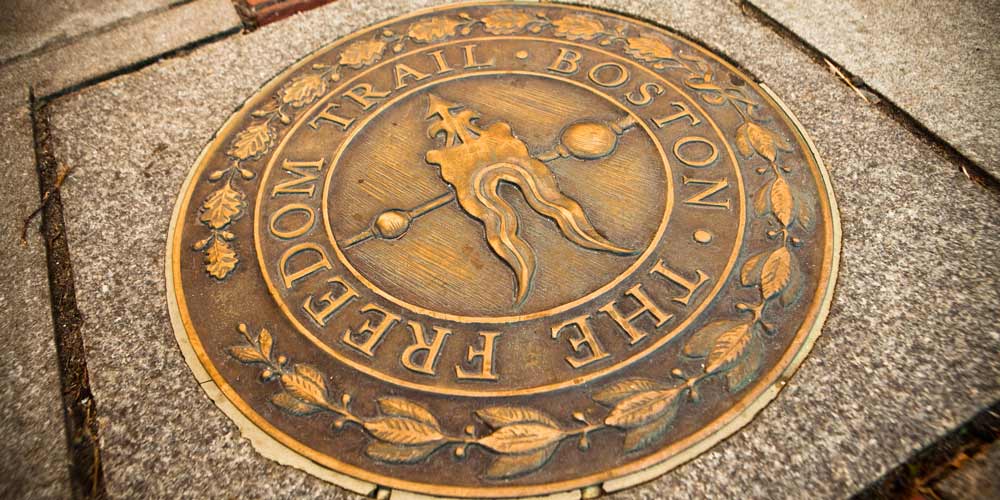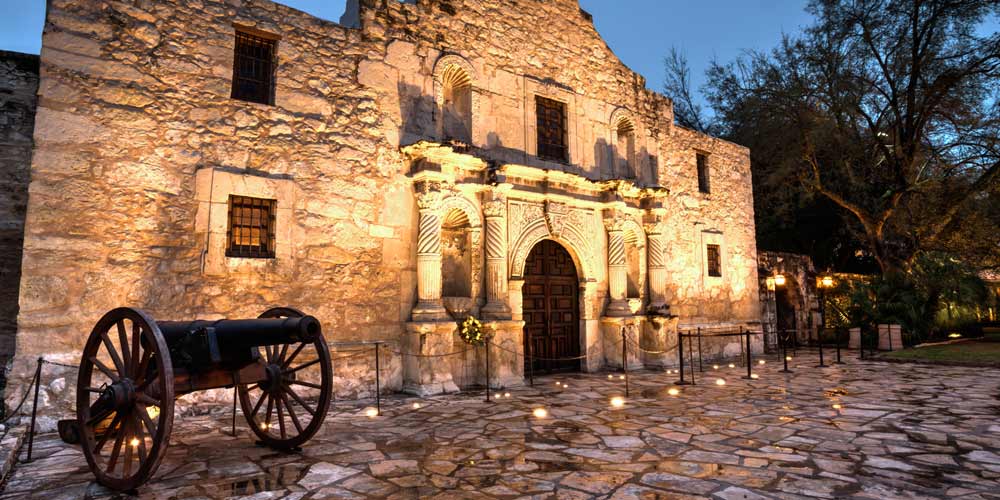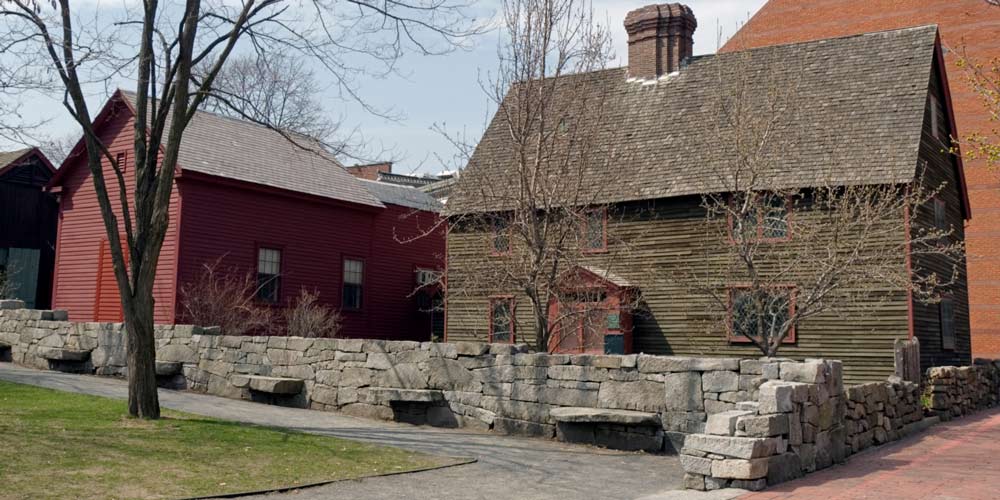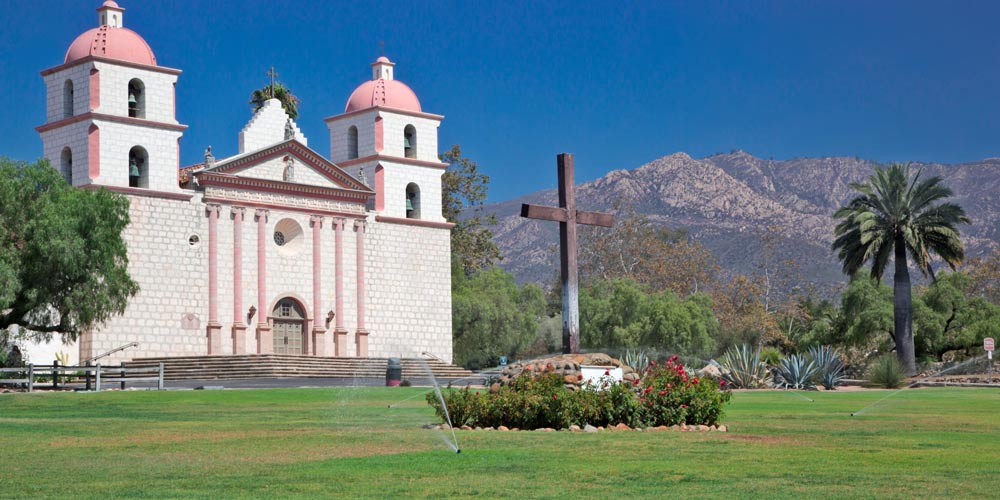
For families looking to explore American roots, Massachusetts’ Plimoth Plantation provides the perfect destination. This pastoral plantation offers a rare look into 17th Century living. Visitors watch demonstrations of cooking, hunting, and weaving and even invited to touch era tools like mallets, and saws. The plantation operates a coffee shop that offers dishes styled after old recipes. Furthermore, the property Plantation a parent’s guide for best tips on how to enjoy this location with children.
The noises from 17th Century tools may be loud to those sensitive to noise. Parents may want to pack noise-canceling headphones to help ameliorate the situation. The venue offers golf cart shuttles for guests unable to walk the distance from the parking lot to the entrance.

“Historical symbol throughout the streets of Boston, Massachusetts”
The Freedom Trail in Boston is the perfect spot to discover the history of the American Revolution. The 2.5-mile long trail takes visitors to Meeting Houses, Churches and even burying grounds. Kids will enjoy following the small red markers on the sidewalks guiding visitors through the center of the city. We recommend the 18th Century guided costume tour for families interested in exploring the pre-revolutionary Bostonian history in depth.
This is a mostly self-guided tour so parents can decide whether they wish to walk the entire 2.5 miles or just do the highlights.

Historians have said that nearly half of Americans today can trace their heritage back to Ellis Island. This tiny New York Bay island served as a primary gateway for over 12 million immigrants to the U.S. from 1892 until 1954. Guests who wish to visit need to board a ferry from Battery park, off the tip of downtown Manhattan. Right before arriving at Ellis Island the ferry loops around the Statue of Liberty making the trip even more memorable. Though this is a self-guided tour guest can take a 45-minute introductory audio tour that showcases the immigrants’ experience as they arrived at Ellis Island. For younger kids ages 6 to 10, the museum offers a shorter less detailed version.
Crowds can be overwhelming, so traveling families should try to visit Ellis Island between October and April, as it is less busy during those months.

Along with the Statue of Liberty, Philadelphia’s Liberty Bell is an iconic symbol of American Freedom. Families planning to visit Philadelphia should allocate at least an hour to explore the Liberty Bell and Constitution Hall, the birthplace of American Freedom. Kids will love the opportunity to sign the constitution right next to 42 life-size statues of the Founding Fathers. Though accessing the Liberty Bell is free, visitors must pass through security and viewing is limited first to come, first serve. Parents should arrive early to experience Constitution Hall to get a ticket for entrance.
Since the Liberty Bell is very popular with school groups and tourists, it can get busy during the hours of 9am and 3pm. The best time to visit with kids on the autism spectrum is after 3pm when the lines are shorter.

Memphis’ Civil Rights Museum with its 260 artifacts and 40 films, guides visitors through five centuries of history. This museum is all about guest involvement: The interactive displays help guests step back in history and experience the student siti-ns of 1960 and Freedom Rides of 1961. Best geared towards older kids, the venue walks visitors through the events leading up to the Martin Luther King murder providing rare access to the assassination site.
Parents should purchase tickets online to skip standing in long lines. The museum tends to be more crowded during the week when it hosts students’ school trips. Furthermore, parents should prepare their kids with autism to the fact there is a security check before entering the venue.

With exciting events and guided tours, San Antonio’s Alamo offers visitors an excellent way to step back in time. The museum is the home of the infamous 1836 battle where many brave men died fighting for freedom. This 300-year-old former Spanish mission and fortress is free to visit and open year-round. Apart from seasonal battle re-enactment events, visitors can partake in guided tours. The one-hour tour starts at the Alamo Plaza and ends at the Church.
The guided tour may not be best for children who can’t wear headsets on their ears.

Home of the John F. Kennedy Space Center, Port Canaveral offers a broad range of sightseeing excitement for the entire family. As part of the touring the space center, guests can book special lunch events to meet real astronauts. Visitors can visit the Astronaut’s Hall of Fame and pay homage to Hero Astronauts. Moreover, die-hard space fans will get a kick out of wandering about the rocket garden filled with retired missiles.
For kids fascinated by space exploration and astronomy, this is the perfect destination. Parents booking the “meet and greet” lunch can ask organizers for a front table near a door to make a quick exit if needed.

Famous for its 1692 outlandish witch trials, Salem, Massachusetts, is an intriguing place to explore. Travelers can stay overnight in the quaint small town or take a day trip from Boston. After witnessing one of the various trial re-enactments, visitors can head on to the Salem Witch Trials Memorial on Charter Street built for the 300th anniversary of the Salem Witch Trials.
Many of the venues have small shows that incorporate loud noises and darkness, which might scare younger kids.

ThismMission is one of original twenty-one California Missions founded in 1786 by the Spanish Franciscans. In fact, the popular church still has an active parish nearly 200 years later. With a museum and 12-acre gardens, the Mission provides visitors a unique perspective of 18th-century life. Older kids and adults will find the cemetery, and mausoleum housing remains of Native Americans fascinating.
Visiting the venue involves quite a bit of walking, some over unpaved ground. Parents should make sure to pack comfortable walking shoes to navigate the somewhat uneven terrain.

The latest U.S. historical spot commemorates September 11, 2001 and the events that left 2,977 people dead in New York City. Housing the largest human-made waterfalls, the 9/11 Memorial is a place to remember and honor those lost. The museum full of memorabilia and recorded testaments of the rescuers offers an insightful view of the tragic events.
Visitors should book their tickets online to avoid crowds and long longs. The best times to visit are weekdays in the late afternoon when school groups and the busloads of tourists have gone.
Margalit Sturm Francus has lived in five different countries on three continents, where she exposed and educated her own children about the world. In 2009, she established a nonprofit website, Autistic Globetrotting, to inspire and encourage autistic families to explore the world. By communicating with both the autistic and travel communities, she aims to raise autism awareness and facilitate the implementation of much-needed accommodations for special needs travelers.